Chiropractic can be incredibly profitable, but often profits decrease because of poor management, time-consuming manual processes, missing or inadequate technology, and a lack of inspiration. When it comes to the ultimate success of a practice, efficiency is the name of the game. With the exact same building blocks, a provider can build a marginally successful practice through inefficient and unrefined processes, or build a wildly profitable practice by maximizing every ounce of efficiency; from patient parking to checkout, and everywhere in between.
SYMPTOMS OF AN INEFFICIENT PRACTICE
The first step in maximizing efficiencies is to know how to target processes within your practice that you can easily improve. Inefficiencies often follow common threads when it comes to their notable symptoms. Check your practice for the following symptoms:
- The level of patient care is variable and often determined by staffing and alternate priorities.
- Patients are limited to who they can see and when, must often wait for an open appointment, and spend the majority of their time in the waiting room.
- Minimal or nonexistent technology.
- Overhead is high, and places pressure on patient volume to effectively maintain operations.
- Regardless of a healthy patient volume, revenue remains low.
- Physicians feel rushed and overbooked with no time to handle day-to-day tasks outside of treatments.
- Large number of staff members with limited competency and little cross-training.
- Both staff and providers experience bouts of burnout.
- The amount of time spent with each individual patient is minimal.
BURNOUT AND ITS ROLE IN EFFICIENCY
Burnout may not be a common bullet point when discussing efficiency. However, it has a greater impact than one might assume. The price of burnout can eat into revenue growth from multiple angles. You are your practice’s most vital resource, and if you are not running efficiently, your practice will falter.
There is nothing worse than spending extra time in the office and completing tasks more slowly because you are worn out or lack inspiration. Make sure that you are running on all cylinders while you are in the office. This helps keep your staff productive, your patients engaged, and your time useful. Take vacations and breaks, and find new and innovative ways to engage in your craft—whether it be continuing education, new techniques, or staff challenges to sharpen everyone’s competitive edge and revitalize the hours spent in the office by all.
TURNING THE TABLES WITH TECHNOLOGY
Efficiency and automation go hand-in-hand, and to achieve a truly efficient practice you need to replace manual processes. This reduces time spent performing menial tasks, lowers staffing requirements, and most importantly—reduces operational costs. Significant revenue growth does not always require higher patient volumes, more time in the office, or additional staff. When it comes to increasing revenue by maximizing current resources, technology is the chiropractor’s best friend.
SCALABILITY
An EHR offers scalability and can easily handle new patients and a growing practice. Without the overhead costs and space required to purchase and house file cabinets, folders, and printers (not to mention staff time spent rummaging through paper files) your dollars are not stretched so thin, and patient volume becomes less critical to the bottom line.
ACCESS AND SPACE
Converting to a paperless practice allows staff to retrieve, store, and share documents electronically in an instant. With the capabilities to access paperless files anywhere within the practice, making retrieval immediate.
SCHEDULING
Scheduling can be a very time-consuming task. Checking in patients and collecting copays while answering phone calls, and searching for open appointments can easily bog down the day. Not to mention, preoccupy precious staffing resources. With EHR software on board the scheduling becomes seamless, and the front desk is automatically notified of late patients, uncollected copays, treatment type, and any other identifying features.
PATIENT FLOW
The easier it is for patients to understand your practice and their place within it, the more efficiently the system will run. Proper signage, well-placed and available staff, patient self check-in stations, and speedy payment processing can all help clients get in and out faster, keeping your practice moving at optimal speed.
BILLING AND INVOICING
Billing is often the bane of a practice, requiring a great deal of time and attention. Accurate invoicing, reporting, claim filing, and status reports are a crucial aspect of a smooth-running office and a consistent revenue stream. An EHR system can quickly prepare invoices, check claims for errors, set up payment arrangements, and provide billing reports that allow you to keep a closer eye on your real-time financials.
AUTOMATED PATIENT REMINDERS
Reminder calls can eat up staff time. Leaving messages can be an unsuccessful means by which to remind patients of their upcoming appointments. This is where automation really shines. Revenue growth means not only building new business, but also mining your current client base for new opportunities. Oftentimes there is gold sitting in that bucket of monthly missed appointments. With the right practice management software, patient reminders are automatically generated and sent out via email, text, or phone. This leaves your office staff free to focus on the patients currently in the office.
COMPLIANCE
Compliance is a major player in healthcare these days, and maintaining compliance requirements set by seemingly constant new government mandates can become a frustrating and laborious process. A well-equipped EHR system can automate compliance and walk you through required processes, leaving you free to focus on your clients while reducing additional paperwork and minimizing the risk of a daunting audit.
Revenue growth doesn’t always require increasing your number of staff or taking on a higher volume of clients. There are plenty of areas of the practice where efficiencies can bring down overhead and help release that tied up revenue. Many manual practice processes now have the ability to be automated. That extra time should be spent investing in the human element of your practice: yourself, your staff, and your patients.
Efficiency is a major player in every component of practice design. Including areas like management of overhead, proper workflow, applicable technology, and effective staffing. Improving your practice’s efficiency can be challenging. Target key areas to help you leverage improvements that result in larger revenue gains and better health for your bottom line.
Do you want more information on how to successfully grow your practice? Check out this webinar recording with Dr. Fabrizio Mancini and Robert Fulton where they discuss how to build your practice and improve your ROI.









